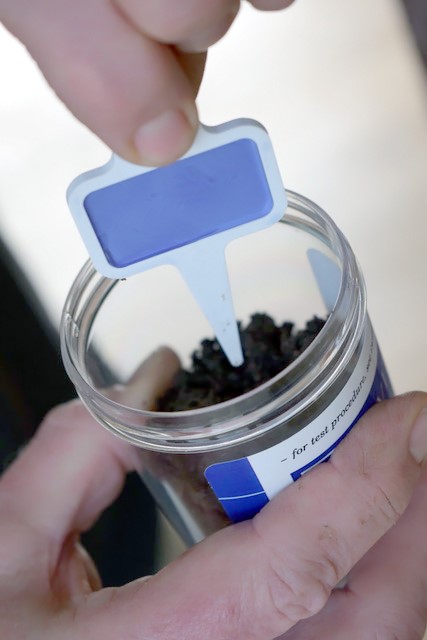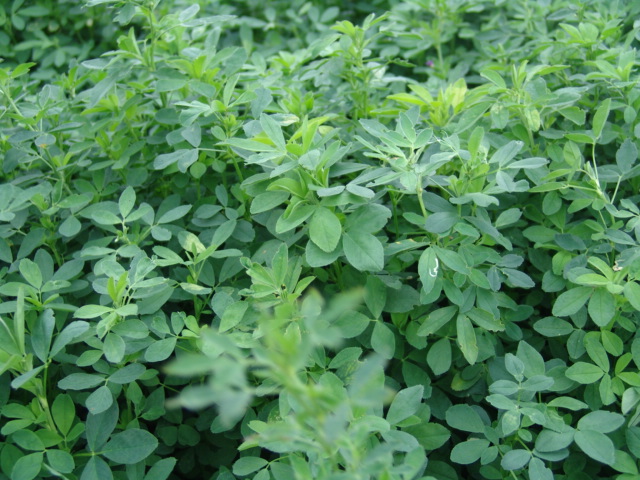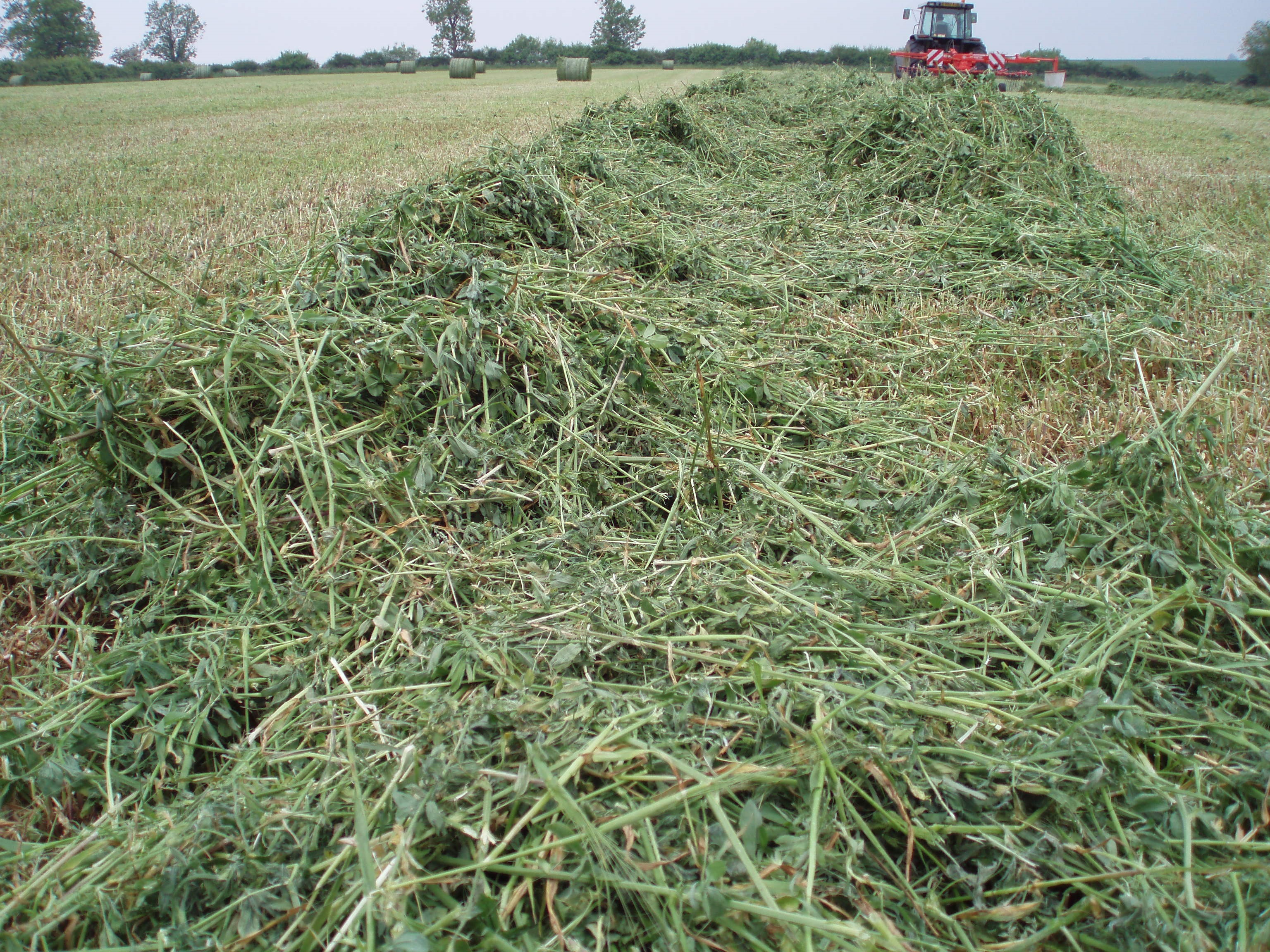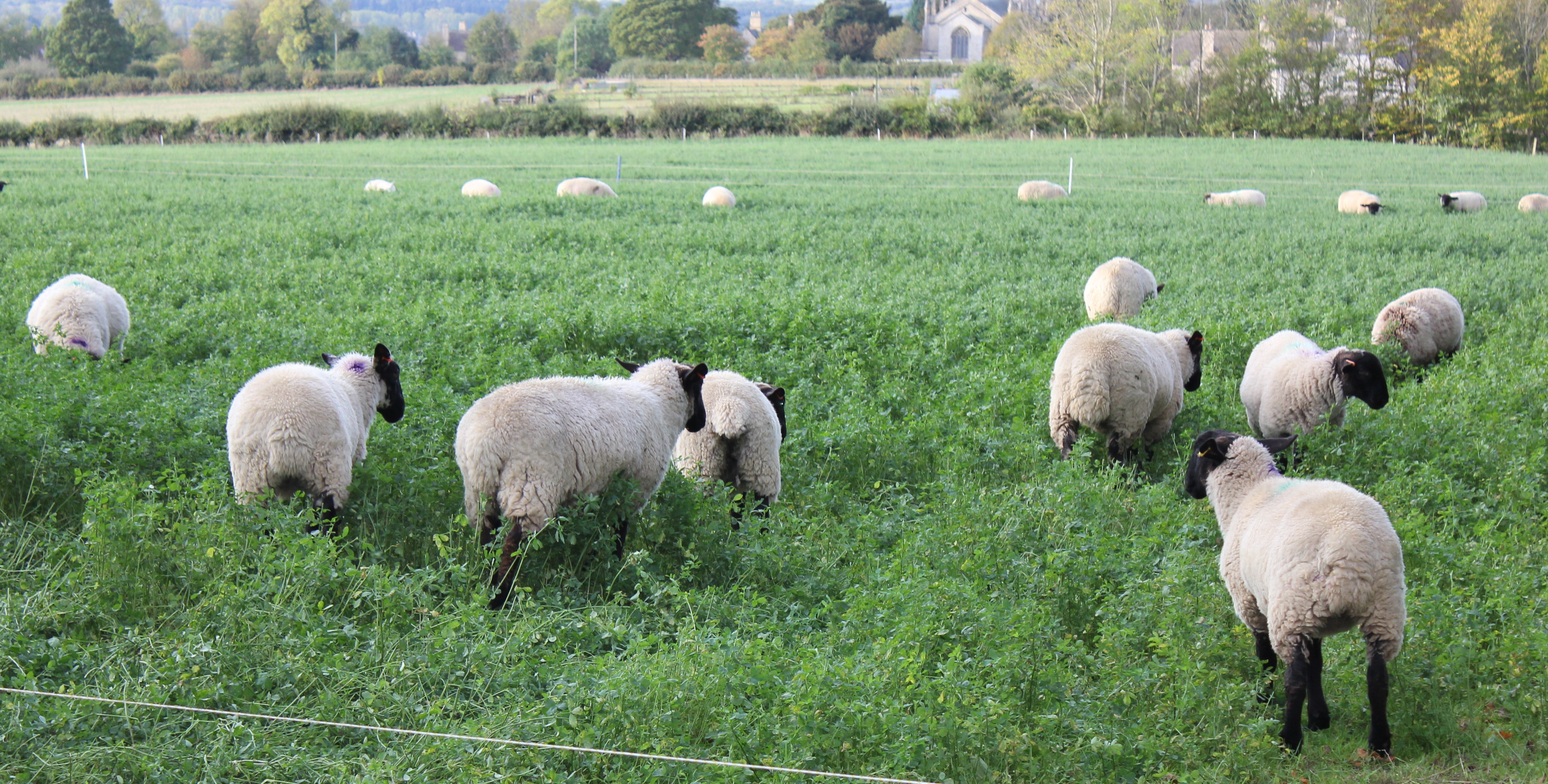- Home
- Knowledge library
- Conserved forage production and evaluation
Conserved forage production and evaluation
Summary
Conserved forage production and evaluation
These projects are part of the Research Partnership between AHDB Dairy and SAC (Lead Contractor). Other subcontracted investigators and delivery partners within the Research Partnership are Harper Adams University, SRUC, University of Reading.
-
Development of Near Infra-Red Spectrometry (NIRS) equations for grass/clover mixture silages
Key messages:
- The majority of farmers could not estimate the concentration of clover in the crop to within +10% DM
- The current equations for grass NIRS gave a good prediction accuracy for some variables, including digestibility, but crude protein and protein degradability were not well predicted
- As clover concertation increased, accuracy decreased
- Improvement to the current grass equations should be found for clover-grass mixture silage
2. Effect of sowing date and uder sowing with spring barley on production of lucerne in the UK
Key messages:
- Spring sowing is more reliable than late summer/autumn sowing in terms of successfully establishing a crop
- There is no consistent advantage or disadvantage in terms of yield or quality in the season of establishment in planting lucerne with a companion crop of spring barley
- Late summer sowings effectively take 12 months to match the productivity and quality of spring sowings as they are likely to continue partitioning resources to the root and crown in the following spring and therefore there is no advantage to late summer sowing
3. Lucerne silage as a replacement for grass and maize silage for high yielding cows
Key messages:
- The requirement for purchased protein was reduced when lucerne was included in the diet
- The effect of including lucerne silage in the diet is largely dependent on the quality of the forage itself and the quality of the forage it replaces
- Farmers looking to incorporate lucerne silage in their diet should base their decision on the farms ability to grow the crop and likely fertiliser savings rather than an improvement in milk yield or quality
- Compared to a good quality first cut grass silage, there is little benefit to the cow performance from the inclusion of lucerne at between 20-60% of forage DM when fed to high yielding cows receiving maize silage based diets
- At high levels of inclusion of lucerne, whole tract digestibility is reduced
- The inclusion of lucerne at 60% of the forage dry matter can result in a saving of 0.6kg/cow/day of soyabean mean and 0.12kg.day of feed grade urea reducing purchased feed costs by 22p/cow/day
- There may be beneficial effects of including lucerne as a replacement for 2nd or 3rd cut grass silage in maize silage based rations, but these have not been determined.
4. Effect of lucerne inclusion level and chop length on performance of dairy cows
Key messages:
- Where high levels of lucerne need to be included in the diet (e.g 75% of forage DM) then short chop lengths are best
- Although there are improvements in the rumen pH and increased rumination time with longer chop lengths there is little effect of rate of inclusion of lucerne on milk quality
- A shorter chop length will increase dry matter intake, milk yield and diet digestibility
- Including lucerne in the diet allowed for a reduction in purchased protein
- The decision to grow lucerne as a replacement for grass silage to feed along with maize silage should be based on the suitability to grow the crop and potential savings in fertiliser and feed costs rather than improvement in milk yield or quality
5. Lucerne silage as a replacement for grass silage for high yielding dairy cows
Key messages:
- The dry matter intake of a ration increases with increasing inclusion of lucerne silage, when compared to medium quality grass silage, however, there is no impact on animal performance
- As the proportion of lucerne in the ration increases, the dry matter of faeces also rises due to the faster passage of feed through the digestive track
- The inclusion of lucerne in grass silage based diets results in a higher requirement for purchased energy, outweighing any bought in protein savings resulting in higher feed cost per cow (£1.12/cow/day in this study).
6. Effect of the addition of hydrolysable tannins to lucerne and red clover silage on high yielding cows
Key messages:
- There is little difference between lucerne or red clover silage on performance, although cows fed lucerne will eat approximately 10% more dry matter
- Decisions on which legume to feed should therefore be based mainly on the ability to grow the crop well, as this will have the greatest effect on overall costings
- Including red clover compared to lucerne will result in a slight improvement in the fatty acid content of the milk, although the differences are comparatively small
- The inclusion of hydrolysable tannis is not an effective means to improve nitrogen use and milk performance in dairy cows yielding approximately 40kg/day
7. The effect of whole crop pea and bean foraes differing in tannin content on the performance of high yielding dairy cows
Key messages:
- There is little effect of the tannin level in forage peas on intake, milk yield, composition, efficiency of N use or milk fatty acid profile.
- Spring grown forage peas are a rapidly growing crop that can produce over 7t DM/ha in 12 weeks, with a crude protein content of 200g/kg DM.
- Compared to grass silage, cows fed forage peas will have a marginally lower milk yield and milk protein yield, but there will be no effect on fat yield or live weight change.
- Feeding spring sown forage peas can reduce feed costs by up to 0.5ppl due to savings in both purchased feed costs and the lower growing costs of forage peas.
8. A desktop review of UK research on growing and feeding maize for high yielding dairy cows
Key messages:
- Maize inclusion in diets at any rates has been shown to increase intake and milk yield of dairy cows.
- When maize is the main forage in a ration it is important to balance it with high protein feeds as maize is low in protein
- The optimum dry matter at harvest for maize is 32-34%, as long as this is achieved before a serious frost kill
- An understanding of European pests and diseases is important so that if they become prevalent in the UK, producers will know what to expect and how to eliminate it.
About this project
Aims and Objectives
-
Development of Near Infra-Red Spectrometry (NIRS) equations for grass/clover mixture silages
- To develop reliable equations using NIRS to more accurately predict the nutritive value of grass-clover silages.
2. Effect of sowing date and uder sowing with spring barley on production of lucerne in the UK
- To determine the effect of sowing date (late summer vs spring) on yield and quality of lucerne in UK growing conditions in the first two years.
- To determine the effect of under sowing lucerne with a spring barley companion crop on the yield and quality of lucerne in UK growing conditions in the first two years.
3. Lucerne silage as a replacement for grass and maize silage for high yielding cows
- To test the effects of including lucerne silage on animal performance when diets contained either grass or maize silage as the forage source.
4. Effect of lucerne inclusion level and chop length on performance of dairy cows
-
To investigate optimal proportions of lucerne silage when included with maize silage in the forage portion of the diet and the effect of varying lucerne chop length on milk production and digestive function.
5. Lucerne silage as a replacement for grass silage for high yielding dairy cows
- To determine the effect of rate of inclusion of lucerne silage as a replacement for grass silage on intake, performance, blood metabolites and digestibility in high yielding cows.
6. Effect of the addition of hydrolysable tannins to lucerne and red clover silage on high yielding cows
-
To determine the effects of feeding lucerne and red clover silages with the addition of tannins at ensiling on the performance, N digestibility and milk composition in high yielding dairy cows.
7. The effect of whole crop pea and bean foraes differing in tannin content on the performance of high yielding dairy cows
- To determine the effect of the inclusion of forage peas differing in their tannin content in the diet of high yielding dairy cows on performance, N efficiency and diet cost.
8. A desktop review of UK research on growing and feeding maize for high yielding dairy cows
-
To consolidate this research into the major findings and to identify the potential gaps where future research will be required and provide dairy farmers with information on the best practices for growing maize and will identify optimum feeding strategies for including maize in dairy cow diets.





